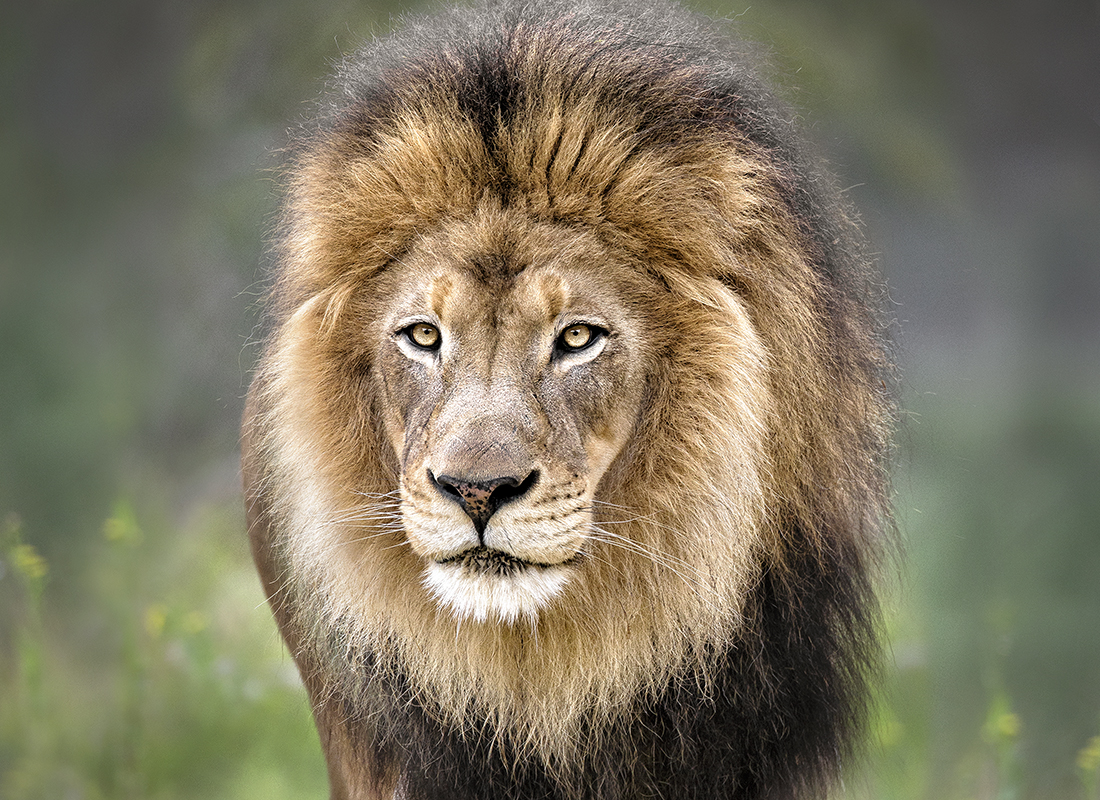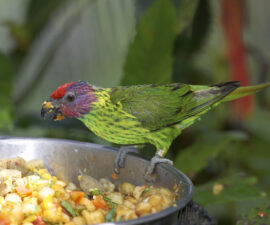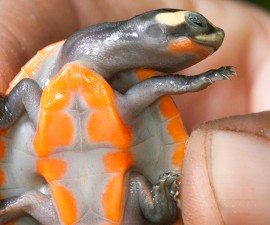A great deal goes into keeping the lions at the Zoo and the Safari Park healthy and challenged.
BY Karyl Carmignani
Photograhpy by Ken Bohn
 How many
How many
inches long
a lion’s tail
can be
One of the most recognizable and admired creatures on the planet, African lions at the Zoo and the Safari Park draw visitors like dress pants attract cat hair. Even in slumber—a common activity—the tawny cats are a sight to behold. Big, bold, brainy, and bewitching, lions can be challenging to keep challenged, but keepers pull out all the stops to ensure the cats have compelling enrichment and stay healthy.
As highly social animals, Panthera leo also bring big-cat drama to the fore, so keepers are dialed into pride and pair dynamics. For instance, keepers at the Zoo can gauge the mood of 12-year-old M’bari, the regal male, by the actions of his mate, Etosha. “If he’s in a good mood, they play and tug each others’ tails,” said Kimberly Hyde, senior keeper. “But if he’s grouchy, it’s obvious that she is avoiding him and staying out of his way.” Then the keepers know not to ask M’bari to do anything out of his comfort zone. “They are a strongly bonded pair,” she said, “and they have very different personalities.” Indeed, each lion exhibits its own type of felid charm. The Zoo is home to two lions, and nine lions live at the Park.
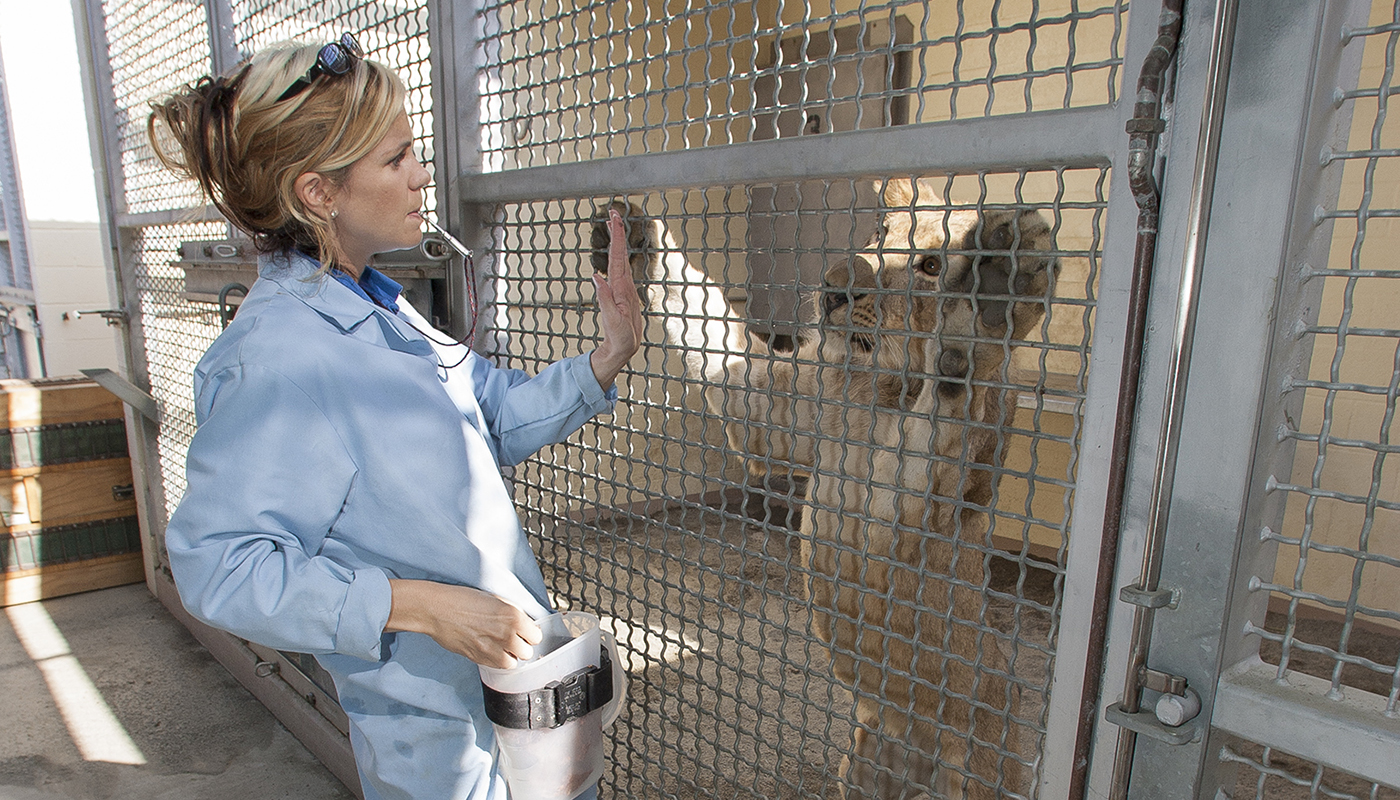
 Hours lions
Hours lions
sleep a day
Good Pupil
Cultivating animal husbandry behaviors is “the result of practice, patience, and professional protocols,” said Safari Park keeper Lacey Byrnes. While it may look like magic, it is “through the use of operant conditioning, positive reinforcement, and trust-based relationships that keepers can train cats to demonstrate a variety of behaviors that allow us to provide the best care possible.” Never was that more pressing than when a lion youngster named Ernest at the Safari Park was diagnosed with a cataract in his eye. Part of the post-surgical protocol was for the one-year-old cat to have eye drops applied three times a day. Given our protected-contact practices, where there is always a secure barrier between staff and potentially dangerous animals, keepers had to find a way to administer the eye drops through the mesh.
Training began before his surgery. “We used a four-inch-long pipette that could fit through the mesh, and with the other hand fed Ernest a special meat mixture while we flushed his eye,” explained Janet Lawhon, lead keeper. As the lion recovered from his procedure in November 2015, he eagerly went along with the thrice- then twice-daily eye treatment, and then it was down to once a day. He finished his follow-up eye care in February and is now good as new!
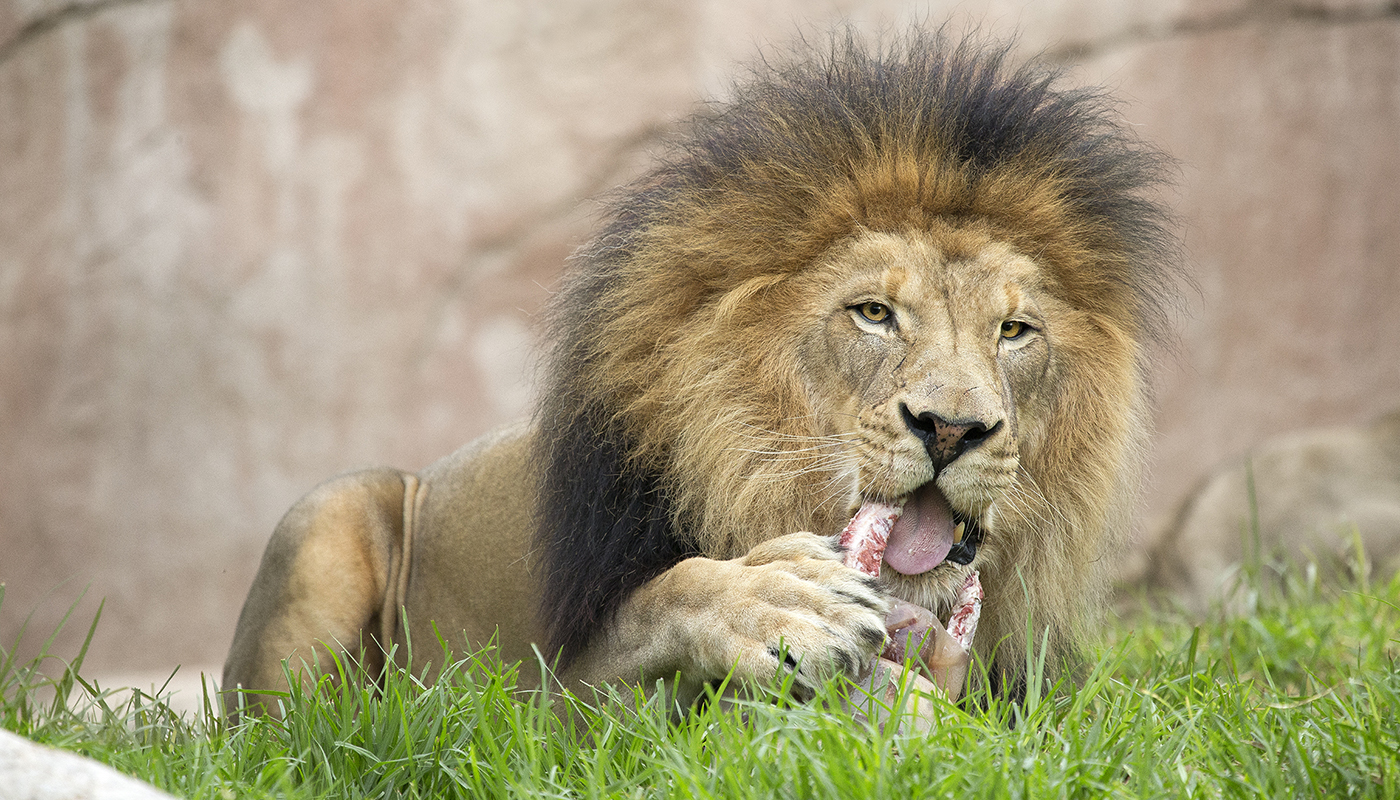
 Years lions
Years lions
can live
in zoos
Big Cat Training
To monitor the health of the lions at the Zoo and the Safari Park, keepers train them in several basic husbandry behaviors, including present paw, open mouth, rise up, lie down, roll over, station/target station, and crate. Other behaviors that take a great deal of time and patience on both sides of the mesh are blood draws from the tail and having the cats accept injections while awake. “Vaccinations for rabies, feline viruses, and canine distemper can be administered while they are anesthetized for a routine physical exam,” explained Dr. Cora Singleton, associate veterinarian at the Zoo, “but it is helpful if the cats will accept the injections without a trip to the hospital.” These behaviors will benefit the cats as they age, since lions are susceptible to diseases similar to those of domestic cats, including kidney issues, arthritis, and cancer.
For injections, the lion is asked to station, pressing its side against the mesh. While one keeper rewards the behavior with delicious meat bits, the other keeper gives the cat a little poke on the flank with a finger, then a pencil, and eventually an empty hypodermic needle. “You can’t rush it,” said Kimberly. At the Zoo, M’bari is slow to catch on, as he is not a fan of change, but Etosha, who “pretty much likes anyone who feeds her,” is a quick study. Similar behavioral training at the Zoo and Park goes into blood draws from the tail. Though it is a lengthy process, it is not impossible, and collecting these samples from the cats is important in managing their health. “Collecting blood samples enables us to check for signs of infection or organ dysfunction, as well as test for heartworm and monitor their response to vaccines to make sure they are still protected,” said Dr. Cora.

 Pounds of food
Pounds of food
Izu (adult male)
eats per day
A MATTER OF CHOICE
As social big cats, lion prides have a certain amount of “fun” built into their activities by interacting with group members. But keepers also keep things interesting for their charges with a variety of other stimuli. To keep the cats’ prowling skills honed, keepers provide “meatball hunts” with hand-rolled meat treats hidden throughout the exhibit. The cats are also crazy for scents like kitchen herbs, animal hair, and high-end perfume, which they rub their faces on and roll in like a field of catnip. Kimberly said it is a natural lion behavior to “mask the predator scent” to improve hunting success.
At the Park, Izu adores rolling in wood shavings and minty scents like wintergreen and peppermint, said Janet. “He also loves boxes, and will protect one like a prey item!” At the Zoo, M’bari’s favorite scent is elephant dung, which he covers himself in. He is also quite fond of his big, white barrel—which “he prefers over food,” so keepers have to be mindful when they give it to him, or he won’t eat his supper. To help beat the heat on warm days, the cats get frozen “blood-sicles” as a special treat, in addition to their beef-based diet. At the Zoo, keepers sometimes add tilapia fish to the pool, which the lions can catch and eat. “Etosha doesn’t like to eat them, but M’bari enjoys catching them,” said Kimberly.
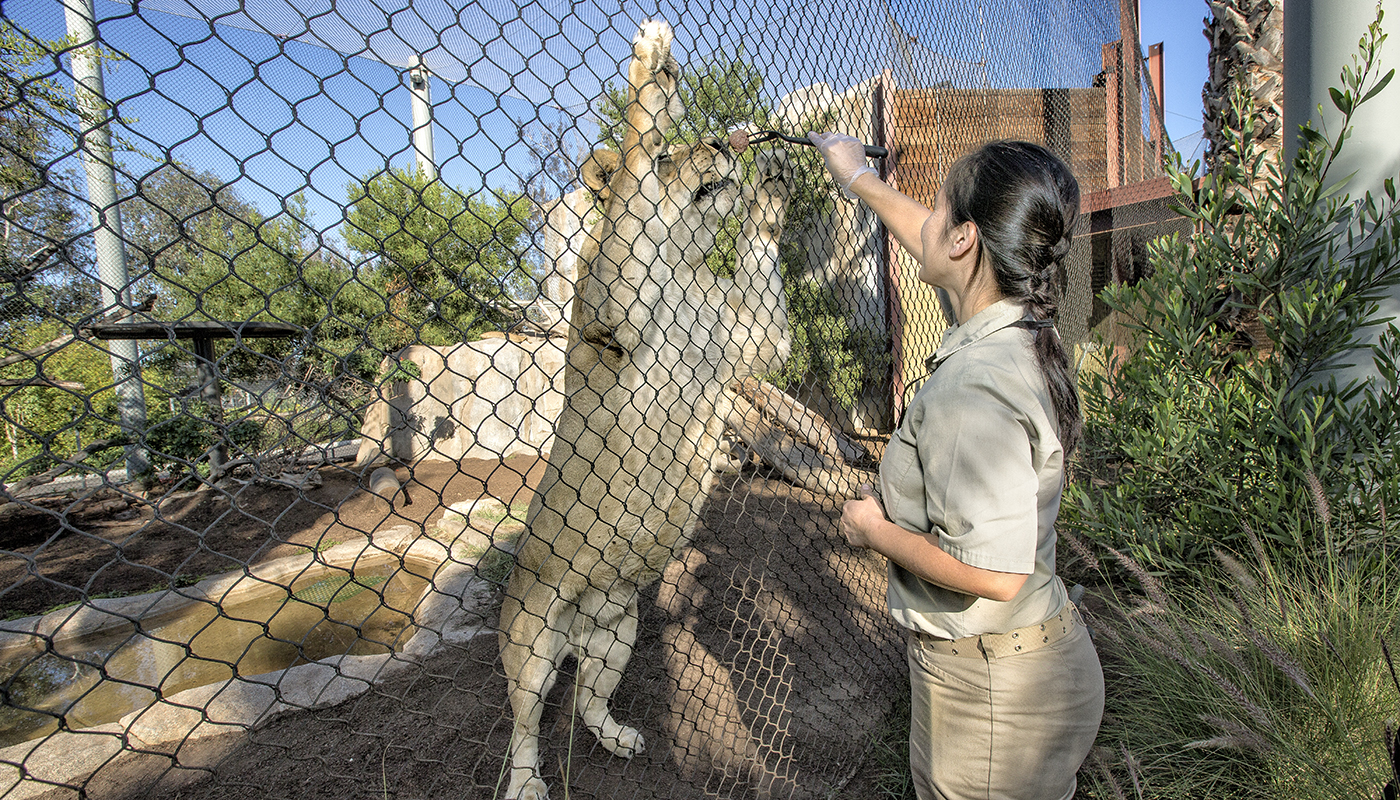
 Pounds of food
Pounds of food
Oshana (adult female)
eats per day
The Doctor Is In
So, how can you tell if the “king of beasts” is ailing? “The first indicators come from the keepers,” said Dr. Cora. “They are amazing at picking up subtle changes in an animal’s gait, appetite, activity level, even the way they’re chewing.” For lions and their voracious appetite for meat and bones, chipping a tooth is not unusual. The “open wide” behavior is a great way to monitor the lions’ oral health. Additionally, keepers can call the cats over and feed them by hand, providing a few precious moments to get a close look at them—and ensuring that each animal is getting its fair share. The attentive daily care that each lion receives is something to roar about.

